

Zitierweise / cite as:
Payer, Alois <1944 - >: Chronik Thailands = กาลานุกรมสยามประเทศไทย. -- Chronik 2000 / B. E. 2543. -- 2. Januar bis Juni. -- Fassung vom 2017-03-20. -- URL: http://www.payer.de/thailandchronik/chronik2000b.htm
Erstmals publiziert: 2012-10-27
Überarbeitungen: 2017-03-20 [Ergänzungen] ; 2016-11-12 [Ergänzungen] ; 2016-11-05 [Ergänzungen] ; 2016-04-20 [Ergänzungen] ; 2016-02-29 [Ergänzungen] ; 2016-02-01 [Ergänzungen] ; 2016-01-24 [Ergänzungen] ; 2014-11-22 [Ergänzungen] ; 2014-04-10 [Ergänzungen] ; 2013-06-07 [Ergänzungen] ; 2013-05-24 [Teilung des Jahrgangs] ; 2013-04-29 [Ergänzungen] ; 2013-04-26 [Teilung des Jahrgangs]; 2013-04-21 [Ergänzungen]; 2013-04-09 [Ergänzungen]; 2013-03-30 [Ergänzungen]; 2013-03-19 [Ergänzungen]; 2013-03-09 [Ergänzungen]; 2013-03-02 [Ergänzungen]; 2013-01-30 [Ergänzungen]; 2013-01-13 [Ergänzungen]; 2012-11-12 [Ergänzungen]
©opyright: Dieser Text steht der Allgemeinheit zur Verfügung. Eine Verwertung in Publikationen, die über übliche Zitate hinausgeht, bedarf der ausdrücklichen Genehmigung des Herausgebers.
Dieser Text ist Teil der Abteilung
Thailand von
Tüpfli's Global Village Library
ช้างตายทั้งตัวเอาใบบัวปิดไม่มิด
|
Gewidmet meiner lieben Frau Margarete Payer die seit unserem ersten Besuch in Thailand 1974 mit mir die Liebe zu den und die Sorge um die Bewohner Thailands teilt. |
|
Bei thailändischen Statistiken muss man mit allen Fehlerquellen rechnen, die in folgendem Werk beschrieben sind:
Die Statistikdiagramme geben also meistens eher qualitative als korrekte quantitative Beziehungen wieder.
|
2000-01 - 2000-05
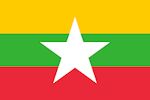
In Nordthailand werden 22 Tonnen Koffein beschlagnahmt, die zur Herstellung von Ya Ba [ยาบ้า] in Myanmar bestimmt sind. Die Menge hätte für fast 400 Mio. Pillen gelangt.
2001-01
Ein Staatsbeamter aus der Provinz Suphan Buri (สุพรรณบุรี) über die Korruption von Banharn Silpa-archa (บรรหาร ศิลปอาชา, 1932 - ):
"In Chainat [ชัยนาท], an MP [Mem,ber of Parliament] eats 40 percent of the funds channeled, a contractor eats 20 percent, and only 40 percent is used to build roads. What kind of roads do they get? Very poor quality ... In Suphan [สุพรรณบุรี], Banharn eats 10 percent and a contractor 5 percent. He spends the rest building high-quality, durable roads, which make Suphan famous. So, let me ask you, 'Which MP is better, Chainat's MP or Banharn?" [Quelle: Nishizaki, Yoshinori [訳吉武好孝, 西崎一郎]: Political authority and provincial identity in Thailand : the making of Banharn-buri. -- Ithaca, N.Y. : Cornell, 2011. -- 254 S. :Ill. ; 26 cm. -- (Studies on Southeast Asia ; 53). -- ISBN 978-0-8772-7753-8. -- S. 185]
Abb.: Lage der Provinzen Chainat [ชัยนาท] und Suphan Buri [สุพรรณบุรี]
[Bildquelle: CIA. -- Public domain]
2000-01-24

Zehn birmanische Karen (ကရင်လူမျိုး), die sich God's Army Faction of Christian Karens nennen, kapern einen Bus nach Ratchaburi (ราชบุรี), überfallen dort ein Krankenhaus und nehmen 800 Geiseln. Sicherheitskräfte stürmen das Krankenhaus und töten die Geiselnehmer. Die God's Army wird von den dreizehnjährigen (!) Zwillingen Johnny und Luther Htoo geführt. Ihre Anhänger glauben, dass die Zwillinge magische "schwarze Zungen" und übernatürliche Kräfte besitzen.
Abb.: Lage von Ratchaburi (ราชบุรี)
[Bildquelle: OpenStreetMap. -- Creative Commons Lizenz (Namensnennung, share alike)]
"God's Army is an armed, revolutionary Christian force that opposed the military government of Burma. The group was an offshoot of the Karen National Union (ကရင် အမျိုးသား အစည်းအရုံး). They were based along the Thailand-Burma border, and conducted a string of audacious guerrilla actions—for example, seizing the embassy of Burma in Bangkok—during the 1990s and early 2000s. The group was led by brothers Johnny and Luther Htoo beginning in 1997, who were at that time estimated to be only ten years of age. Some of the followers of the twins believed that they had "Animist and Christian powers". "In January 2001, the twins, emaciated, turned themselves over to Thai security forces. They abandoned the Karens' goal of an autonomous or independent homeland, in exchange for permission to stay in Thailand, where they revealed themselves as scrawny, confused, Bible-carrying youngsters, with normal red tongues." In 2006 July Johnny Htoo and several of his followers returned to Burma and surrendered to Burmese troops. "It was not immediately clear why Johnny Htoo returned in July to Burma and surrendered to the military regime."
[Quelle: http://en.wikipedia.org/wiki/God%27s_Army_%28revolutionary_group%29. -- Zugriff am 2011-12-25]
"Johnny Htoo and Luther Htoo (born circa 1988) are twin brothers who jointly led the God's Army guerrilla group – a splinter group of Karen National Union (ကရင် အမျိုးသား အစည်းအရုံး) – in Myanmar (Burma) during the late 1990s. When they began leading the group in 1997, they are estimated to have been around ten years old. According to followers, the twins gained fame in 1997 when they commanded the defenders of their village after troops of the Karen National Union had retreated. Various legends claimed that the brothers had numerous magical powers, including invulnerability to bullets and mines and that they could hand out magical bullets. Supposedly, they could kill by pointing a rifle at the ground and concentrating. One tale claims that Johnny turned himself into an old man and back when bathing in a river. Luther claimed he had 250,000 invisible soldiers in his command when Johnny had 150,000. Their flesh-and-blood followers amounted to between 150 and 300 men. Their men referred to them as Bu Lu and Bu Joh. Both were chain smokers.
God's Army was situated in Thailand, just across the border from Burma. They were from the Karen (ကရင်လူမျိုး) ethnic group and were a band of Christian guerrillas who maintained an austere lifestyle, including abstinence from sexual intercourse, alcohol, milk, eggs and pork. In October 1999 God's Army seized the Burmese embassy in Bangkok and the situation ended with their departure.
The Htoos came to worldwide attention in January 2000 when 10 members of God's Army seized a hospital in Ratchaburi (ราชบุรี), Thailand. The group held 700 to 800 patients and staff members hostage for 22 hours. They demanded the Thai government stop shelling Karen positions in Burma and treatment for their wounded. Thai security forces stormed the hospital, killing all 10 of the gunmen, allegedly after they had surrendered.
In a 2000 interview, Luther Htoo stated that he wanted freedom for Karens. They were pursued by the Tatmadaw (တပ်မတော်, Burmese armed forces) and shunned by other Karen rebels.
The twins surrendered to Thai soldiers in January 2001 and requested sanctuary. By that time the number of their followers had dwindled to 20. They repudiated the stories about being invulnerable but insisted that God had helped them to survive over the years. They were reunited with their family. In July 2006, Johnny Htoo surrendered in Burma's military government with eight other members of God's Army in two groups."
[Quelle: http://en.wikipedia.org/wiki/Johnny_and_Luther_Htoo. -- Zugriff am 2011-12-25]
2000-01-24 - 2000-02-21
Phra Pradaeng (พระประแดง), Samut Prakan (สมุทรปราการ): Nuklearunfall
"A radiation accident occurred in Samut Prakan Province (สมุทรปราการ), Thailand in January–February 2000. The accident happened when an insecurely stored unlicensed cobalt-60 radiation source was recovered by scrap metal collectors who, together with a scrapyard worker, subsequently dismantled the container, unknowingly exposing themselves and others nearby to ionizing radiation. Over the following weeks, those exposed developed symptoms of radiation sickness and eventually sought medical attention. The Office of Atomic Energy for Peace (OAEP), Thailand's nuclear regulatory agency, was notified when doctors came to suspect radiation injury, some seventeen days after the initial exposure. The OAEP sent an emergency response team to locate and contain the radiation source, which was estimated to have an activity of 15.7 terabecquerels (420 Ci), and was eventually traced to its owner. Investigations found failure to ensure secure storage of the radiation source to be the root cause of the accident, which resulted in ten people being hospitalized for radiation injury, three of whom died, as well as the potentially significant exposure of 1,872 people. Background
Cobalt-60 (60Co) is a synthetic radioactive isotope of cobalt, with a half-life of 5.27 years, and emits highly penetrating gamma rays. It is commonly used as a radiation source for radiotherapy and equipment sterilization in the hospital setting, and has several other industrial uses as well. The device involved in the Samut Prakan accident was a rotational Gammatron-3 teletherapy unit,[2] manufactured by Siemens and imported to Thailand in 1969. It was licensed for and installed at Ramathibodi Hospital (โรงพยาบาลรามาธิบดี) in Bangkok;[3] the radiation source involved was a replacement installed in 1981, with an initial radioactive activity of 196 TBq (5,300 Ci).[4] At the time of the accident in 2000, its activity was estimated to have decayed to 15.7 TBq (420 Ci).
The licensing of radioisotopes and nuclear material for import, export, possession and use in Thailand is regulated by the Thai Atomic Energy Commission for Peace and its working body, the Office of Atoms for Peace (OAP), formerly known as the Office of Atomic Energy for Peace (OAEP). In principle, the licensing process would involve annual safety inspections, but due to lack of personnel and resources, such inspections were not always properly done, nor were regulatory and control protocols strictly enforced.[5]
The hospital retired the radiotherapy unit in 1994 and acquired a new one from Nordion via its Thai agent Kamol Sukosol Electric Company (KSE).[6][3][notes 1] The old unit and its 60Co source could not be returned either to its original German manufacturer Siemens, which had stopped producing or servicing them, or to the Canadian supplier Nordion, which was not the original manufacturer. Consequently, the hospital sold the old unit to KSE, which already had another licensed unit in storage. However, neither the hospital nor KSE informed the OAEP of the transfer. In 1996 an OAEP inspection found that KSE had three unlicensed units in its warehouse, which had been licensed for the storage of a single unit in 1988.[6]
KSE's lease of the warehouse was terminated in 1999. KSE subsequently returned the licensed unit, while moving the three unregistered units to an unused car park in Bangkok's Prawet District (ประเวศ), which was owned by its parent company. The car park was fenced, but the fence had been breached and nearby residents regularly entered to play football in its empty areas. KSE notified the OAEP of its transfer of the licensed unit, but did not mention the other three, which remained orphan sources.[6]
AccidentOn 24 January 2000, the part of the radiation therapy unit containing the radiation source was acquired by two scrap collectors, who claimed to have bought it from some strangers as scrap metal for resale. They took it home, planning to dismantle it later. On 1 February, the two, together with another two associates, attempted to dismantle the metal part (a 97-kilogram, 42-by-20-centimetre lead cylinder held in a stainless steel casing), which was the unit's source drawer. Using a hammer and chisel, they only managed to crack the welded seam. Two of the men then took the metal piece, along with other scrap metal, to a scrapyard on Soi Wat Mahawong in Phra Pradaeng District (พระประแดง), Samut Prakan Province. There they asked a worker at the scrapyard to cut open the cylinder using an oxyacetylene torch. As the cylinder was cut open, two smaller cylindrical metal pieces, which had held the source capsule, fell out. The worker retrieved the two pieces and kept them in the scrapyard, but was unaware of the source capsule itself. The lead cylinder was returned to the scrap collectors for them to complete the disassembly.[9]
That same day, the four men present when the cylinder was opened (two of the scrap collectors and two scrapyard employees) began to feel ill, experiencing headaches, nausea and vomiting. The scrap collectors succeeded in taking the lead cylinder apart, and took the parts to sell at the scrapyard the next day. The scrapyard employees continued to feel sick during the following week, and on 12 February the scrapyard owner, believing the metal to be causing the illness, asked the scrap collector to take it elsewhere, and had the two smaller metal pieces thrown away.[10]
By mid-February the symptoms of those involved were deteriorating; their symptoms included burn wounds, swollen hands, diarrhoea, fever, and hair loss. One of the scrap collectors went to Samut Prakan Hospital on 15 February and was admitted the next day, while the two scrapyard employees were also admitted, on 16 and 17 February. The scrapyard owner's husband was admitted to Bangkok General Hospital on 17 February due to a nosebleed, while the scrapyard owner, her mother, and her maid (all of whom lived across the street from the scrapyard and sometimes entered) also began to feel ill. A stray dog that was often seen in the scrapyard also died.[11]
Two of the patients at Samut Prakan Hospital were admitted to the surgical ward, while the other was admitted to the medical ward. All were nauseated and vomiting, and two of them were showing leukopenia (low white blood cell count). Reviewing the cases on 18 February, the doctors realized their symptoms were likely caused by radiation exposure, and notified the OAEP.[12]
ResponseUpon receiving notification, the OAEP sent two officers to investigate, who met the doctors and patients at the hospital shortly after noon on 18 February. After questioning the scrapyard owner, they searched for the cylindrical metal pieces initially suspected to be the radiation source, but found that they were not radioactive. They then headed to the scrapyard, and noted abnormally high levels of radiation as they approached, late in the evening. At the scrapyard entrance they measured radiation at an equivalent dose of 1 millisievert per hour (mSv/h) and decided to request additional assistance.[12]
Recognizing the event as a serious radiological accident, the OAEP organized an emergency response team to manage the situation, in conjunction with the local public health and civil defense authorities. They conducted contamination and radiation level surveys and found that there was no contamination, but the radiation dose rate was as high as 10 mSv/h near the source, which kept them from getting close enough to determine what the source was. Surveys to locate the source continued throughout the night. The scrapyard and immediate vicinity were cordoned off, but evacuation was deemed unnecessary.[13]
Retrieval operations began in the afternoon of the following day (19 February 2000), after planning and rehearsing. An excavator was used to clear the way into the scrapyard, and a lead wall was placed to help shield operators from radiation. Scrap metal pieces near the source were removed one by one, using a grasping tool for large pieces, and an improvised electromagnet attached to a 5-metre (16 ft) bamboo rod for smaller ones.[14] A high range radiation dose rate probe was used to screen these metal pieces for radioactivity. A fluorescent screen was used to ultimately determine the exact location of the source, but the team had to wait for cloud cover to reduce moonlight enough to see properly. The source capsule was finally retrieved shortly after midnight and placed in a shielded container. It was identified by in situ gamma spectroscopy as 60Co, and had an estimated activity of 15.7 terabecquerels (420 Ci).[15]
The 60Co source was transferred for storage at the OAEP headquarters. Subsequent surveys found radiation in the scrapyard to have returned to normal background levels. During the same time, the OAEP was informed of the three teletherapy units in the car park, and a separate investigating team found one of the units to have had its drawer assembly missing. This was confirmed to be the origin of the source, and the three units were removed for temporary storage on 21 February.[16]
The OAEP reported the incident to the International Atomic Energy Agency (IAEA), which sent a team of experts on 26 February to assist in the management of the situation and the treatment of those injured.[17]
CasualtiesIn total, ten people were admitted to hospital with radiation sickness: the four scrap collectors, the two scrapyard employees, the scrapyard owner, her husband, her mother, and her maid. Of these, four people (those working at the scrapyard) were estimated to have received radiation doses of over 6 gray (Gy). All patients were ultimately referred to Rajavithi Hospital, where they received inpatient care. All but one of the patients developed agranulocytosis or bicytopenia (depletion of white blood cells and/or platelets). Several also developed burns, and one (the first scrap collector) had to have his finger amputated. Three patients (the two scrapyard workers and the owner's husband) ultimately died of uncontrolled infection and sepsis, all within two months of exposure.[18]
In addition to these casualties, 1,872 people living within 100 metres (330 ft) of the scrapyard were potentially exposed to different levels of ionizing radiation. Physical exams and blood tests were provided to nearly half these people, who sought medical attention. Radiation doses received by OAEP personnel working to recover the radiation source did not exceed 32 mSv, as measured by individual thermoluminescent dosimeters.[19]
Public reaction and aftermathThe accident became a subject of intense news coverage. The origin of the poorly stored radioactive source was traced to KSE, which was charged with possessing radioactive substances without permission and was fined 15,000 baht (approx $450). Environmental Litigation and Advocacy for the Wants (EnLAW), a non-governmental advocacy group, later filed a class action lawsuit against KSE on behalf of the victims, and also against the OAEP in the Administrative Court. The Administrative Court later ruled in 2003 in favour of the plaintiffs, ordering the OAEP to pay 5,222,301 baht (approx $155,000) as restitution. KSE was ordered by the Civil Court to pay a total of 640,246 baht (approx $19,000).[3][20]
In media reports of the accident, several reporters commented negatively on the emergency response team's operation, perceiving them as "not taking the matter [of radiation hazard] seriously"[21] and being unprofessional and lacking training. The BBC told of "officials searching through scrap metal heaps for radioactive waste using sticks and wearing cotton gardening gloves and cloth face-masks."[22] The IAEA defended the team in its report, noting that it included "experienced personnel with expertise in dealing with high radiation fields and control of known contamination," and that they "used innovative means to achieve rapid recovery of the source." It also commented that the lead aprons worn by some members of the response team were not appropriate for use in the situation, as they would not offer adequate protection against ionizing radiation.[23]
As public concern over the accident grew while information and education was limited, misconceptions arose about the nature of radiation hazards. Residents near a Buddhist temple protested and prevented the cremation of one of the victims, believing that the body could spread radiation, despite assurances by the OAEP to the contrary.[24][25]
The IAEA report noted that the main contributing factors to the accident were: difficulties in the disposal of radiation sources, the OAEP's limited oversight capacity, transfer of the disused source without the OAEP's approval, moving the sources to an unsecured location, lack of understandable warnings, and the dismantling of the device.[26] An article published in Australasian Physical & Engineering Sciences in Medicine commented that "the most serious omission occurred when the medical users ... returned the obsolete units to the Medical Dealer without notifying the OAEP" and that their insecure storage "invited theft." It called for provisions for the safe return and verified disposal of all significant radioactive sources, and stated: "National action is needed to cope with the regulatory problem of orphan sources by maintaining accountability of sources through national registers and the legal enforcement of compliance with the regulations."[27]
The accident, along with other similar events, prompted the IAEA to re-evaluate the effectiveness of the radioactive hazard trefoil as a warning symbol. Although the symbol was displayed on the teletherapy head, none of those handling the device were aware of its meaning, nor were there written warnings in Thai. Together with the International Organization for Standardization (ISO), the IAEA developed a new symbol that would serve as an intuitive warning for large sources of ionizing radiation. The new symbol was published in 2007 as ISO 21482, and is intended to accompany the trefoil on internal components of devices containing dangerous sources to prevent persons from unknowingly disassembling them.[28]
In Thailand, however, substantial efforts to prevent further such occurrences had not materialized in the months following the accident. Labour activists, trade unions and workers were lobbying for the creation of an independent occupational health and safety institute. Social critics pointed out that the accident, along with several prior disasters such as the Kader toy factory fire, was part of a trend in which the country's rapid industrialization resulted in increasing health and environmental hazards due to poor regulations and lack of official willingness to tackle the issue.[29]
Similar incidents occurred in Thailand in 2008, without injuries. In June 2008, a cesium-137 sealed radioactive source was found among scrap metal sold to a scrap dealer in Ayutthaya Province (อยุธยา). The dealer recognized the trefoil symbol, and notified the OAP, which responded and found no leak of radiation or contamination. It could not, however, determine the origins of the equipment. In August, a recycling factory in Chachoengsao Province (ฉะเชิงเทรา) notified the OAP after a piece of scrap metal set off its gate detector alarm. The OAP found that the piece of metal contained radium-226 sources, and concluded that it originated from unlicensed use in a lightning preventer.[30]"
[Quelle: https://en.wikipedia.org/wiki/Samut_Prakan_radiation_accident. -- Zugriff am 2016-11-12]
2000-01-29
Der Gouverneur von Bangkok gibt bekannt, dass sich die Luftqualität in Bangkok verbessert hat. Grund dafür sei der verbesserte Verkehrsfluss, die Pflicht, Lastwagen mit Schutt und losem Material mit Plastikplanen abzudecken, und die Pflicht, beim Bau die Gebäude mit Planen abzuschirmen.
2000-02
Pornodarstellerin Tera Patrick (1976 - ; Vater: Brite, Mutter: Thai) wird Pet of the Month der Zeitschrift Penthouse.
Abb.: Tera Patrick, 2007
[Bildquelle: Tu Foto aus Alameda, California, USA / Wikipedia. -- Creative Commons Lizenz (Namensnennung)]
Vipasai Niyambha kommentiert das in The Nation:
"For many, this has a depressingly familiar ring. And just who stands to benefit? We have witnessed parts of Pattaya [พัทยา] become another Patpong [พัฒน์พงษ์]; Koh Tao [เกาะเต่า] like Khao San Road [ถนนข้าวสาร], and Koh Phi Phi [เกาะพีพี] another Patong Beach [หาดป่าตอง ]. Is Koh Chang [เกาะช้าง] destined to fill her coffers yet lose her soul?"
2000-02
Es erscheint:
Nualnoi Treerat [นวลน้อย ตรีรัตน์] ; Noppanun Wannathepsakul [นพนันท์ วรรณเทพสกุล] ; Lewis, Daniel Ray: Global Study on Illegal Drugs : The Case of Bangkok, Thailand. -- Online: pioneer.netserv.chula.ac.th/~ldaniel/pdfs/GlobalBangkok.doc. -- Zugriff am 2016-02-29
"Drug Situation in Thailand Bangkok/Thailand is currently experiencing an amphetamine epidemic. Amphetamine use is widespread. Seizures of amphetamines in the last year are far higher in absolute terms than any other country in the world. The greatest number of users are youths (boys) who use the drugs in groups before engaging in some other activity such as snooker, motorcycle racing, etc. The government has responded and is working hard to suppress drug use, but to little effect. It is even possible that the government’s advertising approach is counterproductive, since in our survey, drug use among youths increased with increased police effort. The production of amphetamines is clearly geared towards children with pills coming in different tastes, smells, and colors. These amphetamine tablets are produced outside the country, mostly in Burma.
Bangkok/Thailand also has a long-term problem with heroin. As is well-known, opium is grown in this area making heroin easily available. Thailand has also played a role as a distribution hub for heroin that is brought to Bangkok and then sent around the world. Due to strong suppression efforts by the government, very little opium is grown in Thailand, but a lot is grown in neighboring countries, especially Burma and Laos. A great deal of heroin still passes through Thailand, and there are still many heroin addicts in Thailand, though overall their number seems to be stable. Users tend to be marginalized members of society who are obvious in their drugged-out appearance. This is in contrast to amphetamine users who appear normal, and who may use drugs socially.
Bangkok/Thailand also has a little spillover use of “high class” drugs such as ecstasy, cocaine, and ketamine, etc. from wealthy countries. These drugs are used at rave parties or discos by the wealthy. They are too expensive to impact the lives of most Thais.
There is also some casual use of marijuana. “Thai” marijuana, which may not always be grown in Thailand, is quite popular outside of Thailand. The use in Thailand is not too great, which may be a result of stiff repression of what is actually a quite mild drug.
Bangkok and Thailand seem to have escaped some of the negative side effects of drug use, in particular violence. There is not much of a history of violence in Thailand of any sort. In Bangkok, there is very little violence that can be associated with drugs. Buyers seem to be able to get enough drugs to support their habit without resorting to violence or robbery. Perhaps that is because drugs are reasonably cheap here, close to the source of production in Burma. Probably it is also because amphetamines are not truly addictive, and if the money is not sufficient, they need not be bought.
There is also little violence from rival gangs as the distribution network is quite decentralized with many separate channels for bringing and distributing drugs from the north.
Interestingly, corruption among police may also help limit violence by tacitly licensing the drug trade. Generally, each seller must pay a fee to the police in their street so that the police will “look the other way”. If another seller enters the market, the first seller may have the option of reporting the second seller to the police who then arrests the second seller on normal drug charges. Another effect of corruption is that there is little interaction (outside of bribes) between local police and the drug pushers. If the police don’t start a fight, why should the sellers start it?
Amphetamine use is very widespread in Bangkok. One taxi driver stated it this way “There are 10,000 little side streets in Bangkok. You can buy amphetamines on every single one of them.” Drug use is also not especially an urban phenomenon in Thailand. Drug use is just as prevalent in other parts of the country, with some regions being worse, and others better.
Amphetamines are viewed as a serious problem, both by the government and by the population. They are not accepted as a matter of course. However, there may be significantly different perceptions by different generations, with parents being very concerned that their kids are using drugs, and kids thinking that amphetamines are not a serious problem.
The physical risk from amphetamines seems to be small. Most of the risk of using amphetamines is from being caught, wasting money, and most especially, wasting the opportunity to do something better with their lives. This author’s opinion is that the amphetamine epidemic is likely a fashion, that will fade in coming years. Nevertheless, the sheer magnitude of the problem is cause for alarm. Thai youth will probably move on to something else. Could that be another drug, or another anti-social behavior? Certainly it is possible, but we don’t know. As an aside, this author is also interested in going to try amphetamines now that I have heard so much about it. Such is the power of fads.
In summary, Bangkok/Thailand is currently experiencing an amphetamine epidemic mostly amongst its youth. Amphetamines are used mostly as a social drug. Some of the worst aspects of drug epidemics are not in evidence in Thailand, with little violence, but with a commensurate rise in drug-related corruption as sellers, and sometimes buyers, pay off the police.
Thailand shares extensive borders with some of the largest producers in the world of both amphetamines and heroin in the world. Despite great success at suppressing the production of illegal drugs of all kinds within its borders, Thailand’s location makes drugs both cheap and easily available. This is likely to continue for some time into the future."
[a.a.O. -- Fair use]
"Corruption It is thought that wholesalers protect their territory though connections to the police. In exchange for bribes to high level officials at the police office, the police essentially give them sole rights over a territory. If another wholesaler tries to move in on that territory, the first dealer investigates, then reports the facts to the police, who then arrest the new dealer for possession or selling. Interesting this de facto “licensing” of a territory may reduce violence stemming from competition between wholesalers, benefiting almost all parties. Police have less work, wholesalers do not have to arm themselves, and civilians do not have to endure violent behavior.
At the highest levels, drug wholesalers are almost immune from prosecution. In 1998, the police tried to arrest one reputedly influential dealer. The police surrounded a house used by this person. After a shootout with police, in which several police were wounded by gunfire and hand grenades, and one of the drug dealers was killed, the police entered the house to discover that the key dealer and two other associates had managed to escape. The other three were arrested, and after a thorough search of the house, 758,000 amphetamine pills were found under the cage of several bears in the basement (to hide the scent from sniffer dogs), and 1.3 million baht ($35,000), and records of trafficking activity, contacts, and other business transactions were found in a safe. The house also contained military weapons. The case was treated as the big bust of the year by the press, but a few days later all three suspects were released “for lack of evidence.” It was claimed that the one gang member who was killed was the one who had done all the shooting.
The influential individual, who is still at large, was thought to control an amphetamines syndicate worth 500 million baht ($13.3 million). As the investigation proceeded he was found to have “friendships” with many police officers. Several influential police officials were found to be driving luxury cars such as Mercedes that the individual had “lent” to them. It is alleged that military helicopters were used to transport drugs for this syndicate, with the drugs packed in 200-liter oil drums, dumped in strategic places during army training missions.
Although higher level drug traffickers are thought to be nearly free from the risk of prosecution, small wholesalers and retailers are more frequently caught. Nevertheless small wholesalers frequently also pay for police protection. The going rate seems to be about 5,000 baht ($130) a month. Of this amount, the local police officer will pass a percentage on to his superiors.
Another common form of corruption, is the agreement between the police and the suspect to reduce the number of tablets claimed to have been found on the suspect. In this way the suspect will get a lighter sentence, and the police will get tablets to either sell, or use as bait in other operations. A bribe may be required for this reduction in charges to occur. In one interview, we were told that the convict might have been allowed to go free if he had paid 20,000 baht."
[a.a.O. -- Fair use]Producers In the Mae Sai [แม่สาย] area there are about ten factories, which together provide 8 million amphetamines tablets to Thailand a month. Over the period of a year this is about 100 million tablets, which divided by ten factories makes about ten million tablets per factory per year. The cost of production is estimated to be about 5 baht per tablet, and the owner must also pay for a broker, 1 baht a tablet, for drug runners, another 2-3 baht, and for other loaders, couriers, etc, say another 2 baht. The price in Mae Sai at this time was 18 baht per tablet, leaving about 8 baht per tablet profit for the owner. Eight times ten million is 80 million baht ($2.1 million) a year per factory. Of course the owner might still need to pay a military contingent, etc.
Border Runners/ Military Escorts/ Custodians of Hidden Drugs
Abb.: Lage von Mae Sai [แม่สาย]
[Bildquelle: OpenStreetMap. -- Creative Commons Lizenz (Namensnennung, share alike)]Generally border runners are paid about 1-2 baht per tablet to take the drug across the border. In Mae Sai they were supposedly paid 2-3 baht per tablet, but this may include other services such as watching over hidden drugs, or delivering them to the drop zone. We are told that originally drug runners would carry about 10,000 tablets at a time, which would only be about 1 kg of weight. Payment would be 20-30,000 baht. Nowadays they carry about 500,000 tablets at a time, about 50 kg, which clearly means they work in groups of two or three. If there are 3 of them, that would make a payment of 400,000 each ($10,500). In another story, eight armed militants fought with police while trying to cross the border with 2 million amphetamine tablets. If payment is 1 baht per tablet, that would make payment per person to be about 250,000 baht ($6,600). If these groups made 8 trips a year, yearly payment would be 2,000,000 baht ($53,000) a year.
Sales BrokersSales brokers arrange for sales from drug lords to Thai agents. Their job is only to arrange a sale, not delivery. In Mae Sai, on the Burmese border, brokers were paid 1 baht per tablet provided orders were for at least 10,000 tablets. If we assume that a order would typically be 30,000-50,000, a typical car load, profit for the broker would be 30,000 to 50,000 baht ($800-1,300) an order. We are also told that 8 million drugs pass through Mae Sai a month, that there are about twenty such brokers, and that they can be recognized because they get rich very quickly. If all drugs are sold through brokers, this would represent 400,000 baht per month per broker, or 3,600,000 baht ($94,000) a year.
Local WholesalerWholesalers can buy drugs from producers for about 12-15 baht a tablet. Assuming their costs are about two baht a tablet (Warehousing, loading, etc) and they sell for 18 baht, that would make a profit of about 3 baht per tablet. Again drugs are probably sold by the car load, or 30,000 to 50,000 tablets, and profit would be 90,000 to 150,000 baht ($2,400-4,000) a load.Paid Transporter
Paid transporters always travel in pairs, perhaps to keep an eye on each other, or perhaps one is the seller and the other the driver. Reports suggest that a trip might pay them 200,000 baht, or 100,000 baht ($2,600) each. That works out to about 2-3 baht per tablet each. The difference in price on the border and in Bangkok is about 10 baht, of which half goes to the paid transporters, and the other half to the hiring party. If the paid transporters make a trip a month they would each make 1.2 million baht ($32,000) a year.
Independent TransporterIf the price in a border town is about twenty baht per tablet, and the price in Bangkok is about thirty baht a tablet, total profit for the independent transporter is 10 times 30,000 to 50,000 or 300,000 to 500,000 ($8,000-13,000) per trip. At a price of 20 baht a tablet, this is a profit margin of 50 percent. If the independent makes a trip a month, yearly income would be 3.6 million to 6 million ($95,000-158,000) a year.
Large WholesalersIf large wholesalers handle 100,000 tablets a week, and make a profit of between 5 and 10 baht per tablet, that would make a yearly total of 26 – 52 million ($700,000-1,400,000) a year. If they handle 100,000 tablets a day they would make 180 – 350 million ($5 million-10 million) a year before expenses.
Medium WholesalersIf a medium wholesaler handles 10,000 tablets a week, and makes a profit of from 10 to 20 baht per tablet, weekly profit would be 100,000-200,000 baht ($2,600-5,200). In an interview we found one medium wholesaler who ran a business with a friend. One of them would collect the money, and the other would deliver the drug to a drop point. Selling a little less than 10,000 baht a week, they each made a weekly profit of about 30,000-40,000 baht ($800-1050), which works out to about 1.5 million-2 million baht ($40,000-53,000) per year.
Small WholesalersIf a small wholesaler handles about 1,000 tablets a week, and makes a profit of 10-20 baht per tablet, weekly profit would be between 10,000 – 20,000 baht. Assuming average values, we suppose weekly profits are about 15,000 baht ($400), for a yearly total of about 800,000 baht ($20,000).
RetailersIf a retailer sells about 300 tablets a week, at a profit of about 20 baht apiece, weekly profits would be 6,000 baht ($158), or 857 baht ($23) a day. In our survey, we found a slightly lower number. On average, user/sellers made an average of 773 baht ($20) a day or 5,400 baht ($142) a week or 280,000 baht ($7,400). Of this amount, drug users spent a total of 564 baht ($15) a day on drugs for personal use. Over a year that would mean they would net 280,000 baht minus 205,000 baht, or 75,000 baht ($2,000) a year. This is about the same amount an unskilled worker would make at a real job, but they have an easier life (until they are caught) and they get to take drugs.
Wages over timeAlthough it is believed that salaries for participants in the drug trade are linked to wages in the overall labor market, especially at the lower retail and small wholesaler levels, there has been little change in wage rates for the labor market as a whole which would us allow to study this relationship over time. Unemployment has risen since the 1997 recession, and prices of illegal drugs have fallen squeezing margins at the retail level. This suggests that the drug labor market is linked to the overall labor market in a usual fashion."
[a.a.O. -- Fair use]
2000-02-03
Ein Beamter des Department of Highways in Suphan Buri (สุพรรณบุรี) über die Kompetenz von Banharn Silpa-archa (บรรหาร ศิลปอาชา, 1932 - ):
Abb.: Lage der Provinz Suphan Buri (สุพรรณบุรี)
Bildquelle: [Bildquelle: CIA. -- Public domain]
"Banharn owns a construction company himself, so he can tell immediately if any substandard materials are being used. He knows all the tricks in the trade. You can't fool him. Nobody would dare." [Quelle: Nishizaki, Yoshinori [訳吉武好孝, 西崎一郎]: Political authority and provincial identity in Thailand : the making of Banharn-buri. -- Ithaca, N.Y. : Cornell, 2011. -- 254 S. :Ill. ; 26 cm. -- (Studies on Southeast Asia ; 53). -- ISBN 978-0-8772-7753-8. -- S. 133]
2000-02-12

Der in Thailand lebende US-Keyboardist Eric Franklin Rosser gibt laut The Nation zu, junge Thai Mädchen belästigt zu haben, es seinen aber "höchstens" fünf Mädchen gewesen.
2000-02-16
Abb.: Sanitsuda Ekachai (สนิทสุดา เอกชัย)
[Bildquelle: FAO]Bangkok Post: Sanitsuda Ekachai (สนิทสุดา เอกชัย, 1955 - ): "Simple solutions"
Über eine Konferenz der Foundation for Sustainable Community Development. Es geht vor allem um die Schuldenfalle. Laut Department of Agricultural Economics betragen die Gesamtschulden der Bauern Thailands über 140 Milliarden Baht. Als Heilmittel werden im Sinne der Sozialromantik chemiefreie Mischwirtschaft angepriesen sowie Self-Sufficient Economy.
2000-02-18 - 2000-02-20
Guinness Buch der Rekorde: Längster Kinobesuch. 14 Zuschauer schauen im Grand Entertainment Global Village Kino in Bangkok 50 Stunden 50 Minuten lang Filme an. Der bisherige Rekord von 37 Stunden 25 Minuten wird von 74 Zuschauern gebrochen. Zu Beginn waren es 369 Zuschauer.
2000-02-19

Seine Majestät, der König erhält aus der Hand von Juan Antonio Samaranch, Präsident des Internationalen Olympischen Komitees, den "Lalaounis Cup" für seine herausragende Verdienste um die Athletik und seine Treue zum olympischen Ideal.
Abb.: Lalaounis Cup, 2000-02-19
2000-02-23
"Jeepney", Oil and oil pastel on canvas 80 x 100 cm, von Sumeth Jumsai Na Ayudhaya (ดร. สุเมธ ชุมสาย ณ อยุธยา, 1939 - )
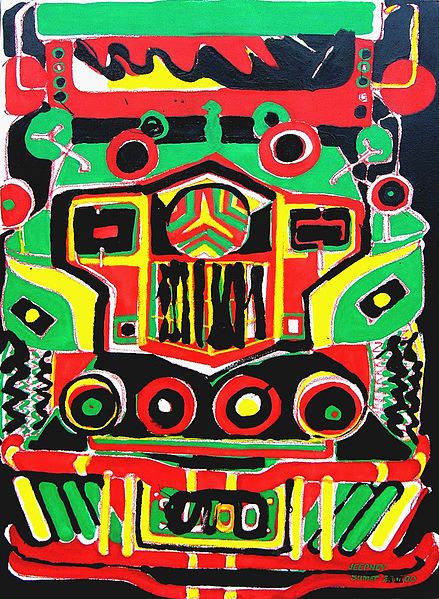
Abb.:
"Jeepney", Oil and oil pastel on canvas 80 x 100 cm, von Sumeth Jumsai Na Ayudhaya (ดร.
สุเมธ ชุมสาย ณ อยุธยา)
[Bildquelle: Sumet jumsai / Wikipedia.
-- Creative
Commons Lizenz (Namensnennung, share alike)]
200-02-24
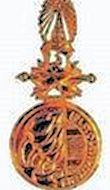
Zu National Artists (ศิลปินแห่งชาติ) werden ernannt:
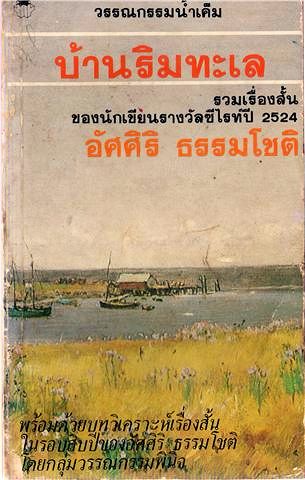
Abb.: Einbandtitel eines Buchs von Ussiri Dhammachote
(นายอัศศิริ ธรรมโชติ)
[Fair use]
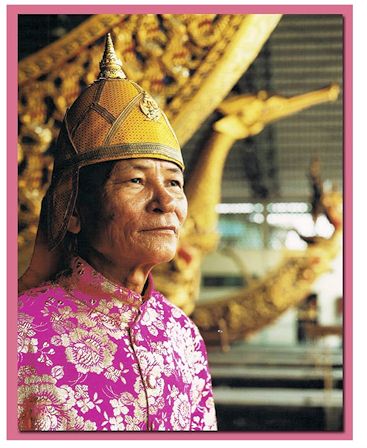
Abb.: Mongkol Seangsawang (พลเรือตรี มงคล แสงสว่าง)
[Bildquelle:
http://www.culture.go.th. -- Zugriff am 2013-04-17. -- Fair use]
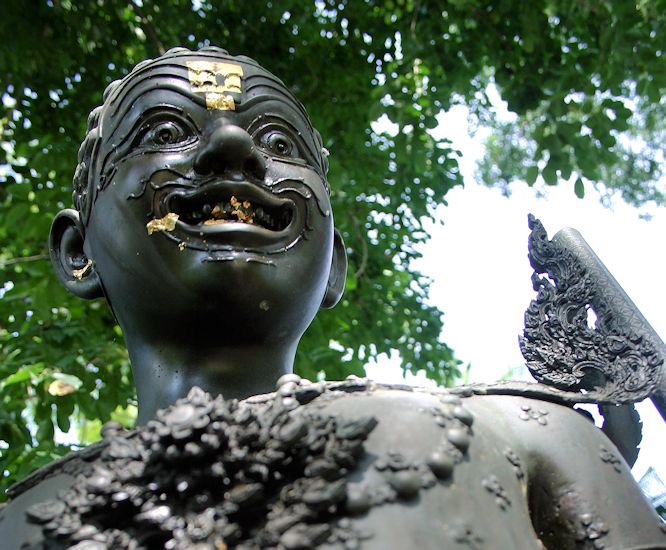
Abb.: Statue,
Rama II Memorial Park, Amphoe Amphawa (อัมพวา),
Samut Songkhram (สมุทรสงคราม)
/ von Chakrabhand Posayakrit (นายจักรพันธุ์ โปษยกฤต), 2005
[Bildquelle: A. Aruninta / Wikipedia. -- GNU FDLicense]
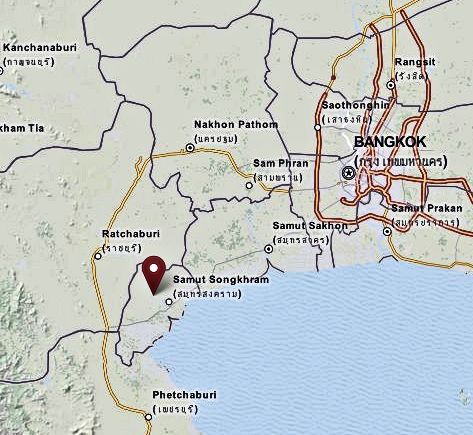
Abb.: Lage von
Amphoe Amphawa (อัมพวา)
[Bildquelle: OpenStreetMap. --
Creative
Commons Lizenz (Namensnennung, share alike)]
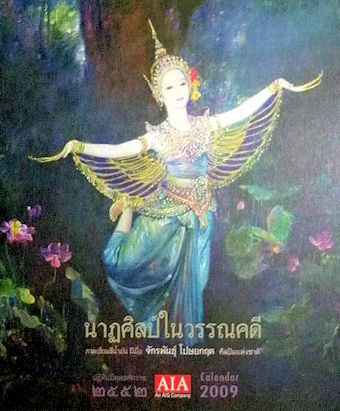
Abb.: Kalender von
Chakrabhand Posayakrit (นายจักรพันธุ์ โปษยกฤต), 2009
[Fair use]
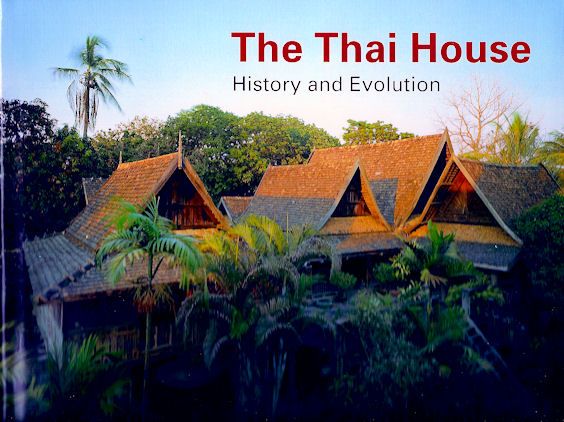
Abb.: Buch, an dem Ruetai Jaijongrak (รศ. ฤทัย
ใจจงรัก) Mitautor ist, 2002
[Fair use]
2000-03
Zum Beispiel:
Ein Nudelverkäufer aus Amphoe Song Phi Nong (สองพี่น้อง) über Erfahrungen mit Bürokraten:
Abb.: Lage von Amphoe Song Phi Nong (สองพี่น้อง)
[Bildquelle: OpenStreetMap. -- Creative Commons Lizenz (Namensnennung, share alike)]
"I can't remember exactly when. It was many decades ago, Thanom's [Thanom Kittikachorn - ถนอม กิตติขจร] days. Our village was isolated, so we asked for state funds for a road. Our village head filed a request. We waited for a year, but we received no reply. We thought, "Oh, they just ignored our request. Our village is so small. It's not important to them." Then we received the news that our request was approved. I can't remember how much, but we got a big fund. We were all happy. I thought, "The government does care about us." But what happened? They built a road all right, but it was not up to standard. Everyone could tell it was sloppy work [ ไม่เป้นสับปะรด] [mai pen sapparot]. ... We should have gotten a much better road. We asked the civil servant in charge, "Why?" He said the budget was slashed. We didn't believe it. He and his superiors must have "eaten" [the budget]." [Quelle: Nishizaki, Yoshinori [訳吉武好孝, 西崎一郎]: Political authority and provincial identity in Thailand : the making of Banharn-buri. -- Ithaca, N.Y. : Cornell, 2011. -- 254 S. :Ill. ; 26 cm. -- (Studies on Southeast Asia ; 53). -- ISBN 978-0-8772-7753-8 . -- S. 48]
2000-03
Fertigstellung des 54 km langen Bang Na - Bang Phli - Bang Pakong Expressway = Burapha Withi Expressway (ทางพิเศษบูรพาวิถี)
Abb.: Verlauf des Burapha Withi Expressway (ทางพิเศษบูรพาวิถี)
[Bildquelle: OpenStreetMap. -- Creative Commons Lizenz (Namensnennung, share alike)]
Abb.: Burapha Withi Expressway (ทางพิเศษบูรพาวิถี)
[Bildquelle: Miniwildebeest / Wikimedia. -- Public domain]
"Der Bang Na Expressway (vollständig: Bang Na – Bang Pli – Bang Pakong Expressway), offiziell Burapha Withi Expressway (Thai: ทางพิเศษบูรพาวิถี), ist eine 54 Kilometer lange sechsspurige Hochstraße (Autobahn) in Bangkok, Thailand. Das Bauwerk, statisch gesehen eine Balkenbrücke, wurde im März 2000 fertiggestellt und galt als längste Brücke der Welt.[1] Der Bang Na Expressway ist als die „Thailand Route 34“ (ทางหลวงแผ่นดินหมายเลข 34) mautpflichtig und Teil des Highway Bang Na-Trat. Sie beginnt im Stadtteil Bang Na (บางนา) in Südost-Bangkok und führt vorbei am internationalen Flughafen Bangkok-Suvarnabhumi (Entfernung Luftlinie 2,5 km, Straßen-Entfernung 18 km) und weiter in südöstlicher Richtung bis zur Provinz Chonburi (ชลบุรี).
Die Hochstraße wurde in fünf Jahren (von 1995 bis 2000) von dem „Joint Venture BBCD“ gebaut, welches aus dem deutschen Bauunternehmen Bilfinger Berger und dem thailändischen Ch. Karn-Chang bestand. Die Gesamtkosten betrugen mehr als 1 Milliarde US-Dollar. Die vorgespannten Betonfertigteile haben pro Feld eine Spannweite von 44 Metern und eine Breite von 27,2 Metern. Die Straße hat eine Gesamtoberfläche von 1,9 Millionen Quadratmetern.[1]
Die für den Unterhalt des Bauwerks zuständige Behörde ist die Expressway Authority of Thailand (EXAT). Das neue elektronische Mautsystem wurde von dem Konsortium „FKS Joint Venture“ (Kapsch TrafficCom A.B., Fatima Group und Smart Traffic Co Ltd.) entwickelt und Anfang 2010 ausgeführt. Die Kosten hierfür betrugen etwa sieben Millionen Euro.[2]"
[Quelle: http://de.wikipedia.org/wiki/Bang_Na_Expressway. -- Zugriff am 2012-06-06]
2000-03-05

Associated Press meldet, dass in den 1990er Jahren Konzessionäre für das Sammeln von Schwalbennestern (für Schwalbennestersuppe - 燕窩) in Südthailand über ein Dutzend Dörfler getötet haben.
2000-03-07
Das 5th Cavalry Regiment in Saraburi (สระบุรี) bietet thailändischen und ausländischen Touristen an, in Panzern und anderen Militärfahrzeugen zu fahren. Damit erschließt sich das Militär Tourismus als weitere Einkommensquelle. In Saraburi hat das Regiment auch 600 Rai, auf denen die 1.000 Soldaten Reis und Gemüse für ihr eigenes Essen anbauen.
Abb.: Lage von Saraburi (สระบุรี)
[Bildquelle: OpenStreetMap. -- Creative Commons Lizenz (Namensnennung, share alike)]
2000-03-08
Premiere des Films The Iron Ladies (สตรีเหล็ก) von Yongyoot Thongkongtoon (ยงยุทธ ทองกองทุน, 1967 - )
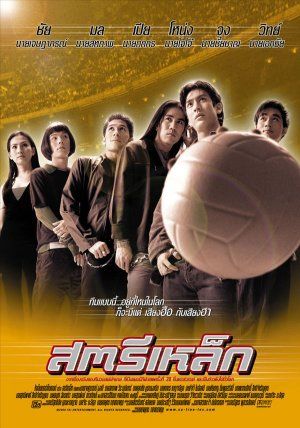
Abb.: Plakat
[Bildquelle: th.Wikipedia. -- Fair use]
|
"The Iron Ladies (Thai: สตรีเหล็ก or Satree lek) is a Thai comedy film from the year 2000. The movie follows the true events of a men's volleyball team, composed mainly of gay and kathoey (กะเทย, transgender) athletes. The movie was directed by Youngyooth Thongkonthun (ยงยุทธ ทองกองทุน, 1967 - ) and written by Visuttchai Boonyakarnjawa (วิสุทธิชัย บุณยะกาญจน) and Jira Maligool (จิระ มะลิกุล, 1961 - ). In 2003, the combined sequel and prequel called The Iron Ladies 2 (สตรีเหล็ก 2 - Satree lek 2) [1] was released. The film is based upon how the characters of The Iron Ladies met, and how they would later reunite for another volleyball tournament. PlotThe film was released in 2000 and is set in 1996, when the real team competed and won the national championships in Thailand. The two main characters, Mon (มล) and Jung (จุง), play two gay transvestites, who had been constantly overlooked by volleyball coaches because of their appearance. However, when a local team changes coaches, the new coach holds tryouts for a new team. When Mon and Jung are selected, most of the old players resign, leaving the new coach, Coach Bee (บี๋), in a sticky predicament. Mon and Jung are then forced to enlist the help of other gay and transsexual friends who they used to play volleyball with in university. These new players include Wit (วิทย์ ), who hasn't told his fiancée he is gay, Pia (เปีย), a transsexual dancer and Nong (โหน่ง), a gay army conscript. When the competition begins, all but one player in the team are gay or transsexual. Because of their appearance on court, many of the match officials intend to ban the team, soon dubbed "The Iron Ladies", from the tournament. However, seeing how much the team is liked by the crowd soon changes many of their opinions. At the end credits of the film, the real "Iron Ladies" are shown as they were at the time of making the film. Cast
A hit in Thailand as well as the international film festival circuit, the film has been nominated twelve times and won ten awards, including the Thailand National Film Association Awards (รางวัลภาพยนตร์แห่งชาติ สุพรรณหงส์), Toronto International Film Festival and the reader award of German LGBT (lesbian, gay, bisexual, and transgender)magazine Siegessäule at the Berlin International Film Festival. It also played at the Pusan International Film Festival (부산국제영화제), the San Francisco Asian American Film Festival, the Miami Gay and Lesbian Film Festival, the Los Angeles Asian Pacific Film Festival, the Seattle International Film Festival and the San Francisco International Lesbian and Gay Film Festival." [Quelle: http://en.wikipedia.org/wiki/The_Iron_Ladies_%28film%29. -- Zugriff am 2013-03-19] |
2000-03-15

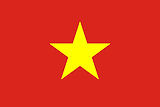
Abschluss der Besuchs von US-Verteidigungsminister William Cohen in Vietnam. Der Besuch gilt als Wendepunkt der Beziehungen zwischen USA und Vietnam.
Abb.: Vietnam
[Bildquelle: CIA. -- Public domain]
Abb.: William Cohen mit Präsident Bill Clinton, 1997
[Bildquelle: DoD photo by Helene C. Stikkel / Wikipedia. -- Public domain]
2000-03-18
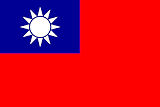
Erstmals gewinnt in Taiwan nicht die Kuomintang (中國國民黨) bei Präsidentenwahlen. Gewählt wird mit 39,3% der Stimmen der Kandidat der Demokratischen Fortschrittspartei (DP), Chen Shui-bian (陳水扁, 1950 - ).
Abb.: Lage von Taiwan
[Bildquelle: OpenStreetMap. -- Creative Commons Lizenz (Namensnennung, share alike)]
Abb.: Chen Shui-bian (陳水扁), 2005
[Bildquelle: Jamali Jack / Wikipedia. -- GNU FDLicense]
2000-03-26
Die Polizei konfisziert in einem Geschäft in Nonthaburi (นนทบุรี) 100.000 illegale Kopien von CDs. Der Verkauf solcher CDs geht aber thailandweit meist ungestört weiter.
Abb.: Lage von Nonthaburi (นนทบุรี)
[Bildquelle: OpenStreetMap. -- Creative Commons Lizenz (Namensnennung, share alike)]
2000-04 - 2006-06-30
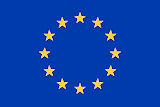
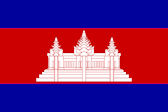
EU ASAC (European Union Assistance on Curbing Small Arms and light weapons in Cambodia)
"EU ASAC (European Union Assistance on Curbing Small Arms and light weapons in Cambodia) was set up under European Union Council Decision 1999/730/CFSP of 15 November 1999 and started operations in April 2000. For more than six years EU ASAC assisted the Royal Cambodian Government by:
- strengthening the legal framework by assisting in the development of a new Law on Weapons and Ammunition (see Arms Law);
- stimulating the voluntary handover of weapons illegally held by the civilian population through weapons for development projects (see Voluntary Weapons Collection);
- registering and securely storing all the Small Arms and Light Weapons (SALW) of the Ministry of National Defence (see Registration and Safe Storage);
- destroying illegal and surplus weapons in public Flames of Peace ceremonies (see Weapons Destructions); and
- stimulating public awareness on the dangers of SALW in the country (see Public Awareness).
By 30 June 2006 EU ASAC had achieved all the goals laid out in Council Decision 1999/730/CFSP and was credited with assisting to make Cambodia a safer country. Therefore all project activities were ended on 30 June 2006 and the project was closed.
[...]
EU ASAC helped destroy over 142,000 weapons in CambodiaThe Cambodian Government began destroying surplus and illegal weapons in May 1999. In April 2001 EU ASAC started giving financial and technical assistance to enable the policy of destroying weapons to be continued through public Flames of Peace ceremonies. In all EU ASAC assisted in the destruction of over 142,000 weapons. The Cambodian Government marked the official ending of the co-operation with EU ASAC with a National Flame of Peace ceremony in Kandal Province [កណ្ដាល] on 20 June 2006. Prime Minister Hun Sen [ហ៊ុន សែន, 1952 - ] presided and over 10,000 people attended the ceremony. As at 30 June 2006 over 198,000 weapons had been destroyed by the Cambodian Government since the first ceremony in May 1999. For details of all the destruction ceremonies see Destruction Table."
[Quelle: http://www.eu-asac.org/. -- Zugriff am 2016-04-20. -- Fair use]
2000-04-06

Die private Firma Celera Genomics Corporation hat die menschlichen Gene zu 99% entschlüsselt.
Abb.: "Automated DNA sequencing output - HGP. The output from an automated DNA sequencing machine used by the Human Genome Project to determine the complete human DNA sequence. Each vertical lane shows the sequence of bases in a given stretch of DNA. Each of the four different bases is labelled with one of the four coloured dyes. The order of the bases is analysed by a computer and assembled to give the continuous base sequence of each chromosome. This sequence is part of human chromosome 1. "
[Bildquelle: Wellcome Images. -- Creative Commons Lizenz (Namensnennung, keine kommerzielle Nutzung, keine Bearbeitung)]
2000-04-11
Laut Thai Farmers Research Centre (TFRC) benutzen in Bangkok 200.000 bis 300.000 Arbeiter regelmäßig Ya Ba [ยาบ้า]. 88% der Arbeiter benutzen Stimulantien wie Energy Drinks, von denen ca. 10 Marken erhältlich sind, wie z.B. M-150®, Lipovitan-D®, Krating Daeng® (กระทิงแดง®).
2000-04-17

Tuanku Syed Sirajuddin ibni Tuanku Syed Putra Jamalullail (1943 - ) wird Raja von Perlis (ﭬﺮليس).
Abb.: Tuanku Syed Sirajuddin ibni Tuanku Syed Putra Jamalullail, 2003
[Bildquelle: Russian Presidential Press and Information Office / Wikipedia. -- Creative Commons Lizenz (Namensnennung)]
Abb.: Lage von Perlis (ﭬﺮليس)
[Bildquelle: CIA. -- Public domain]
2000-04-26
Zigarettenpackungen müssen Abbildungen von Erkrankungen durch Zigarettenrauchen tragen. Im Fernsehen dürfen keine Schauspieler oder Cartoon-Figuren beim Rauchen gezeigt werden. Entsprechende Szenen in Filmen sind unkenntlich zu machen. All dies schreibt das Gesundheitsministerium vor.
Abb.: Zigarettenpackungen, Thailand
[Bildquelle: Brandon Fick. -- http://www.flickr.com/photos/ficken/2947826728/. -- Zugriff am 2011-12-25. -- Creative Commons Lizenz (Namensnennung)]
2000-04-28

Goldene Hochzeit (50 Jahre) des Königspaars.
Abb.: 500.000-Baht-Schein zur Goldenen Hochzeit des Königspaars, 2000
[Bildquelle: th.Wikipedia]
2000-04-30

Vietnam feiert das Ende des Vietnamkriegs vor 25 Jahren.
Abb.: Abwurf einer Phosphorbombe durch ein US-Flugzeug über Südvietnam
[Bildquelle: USAF / Wikimedia. -- Public domain]
2000-05
Die Regierung erleichtert Erteilung der Thai-Staatsbürgerschaft an Bergvölker (Hill tribes, ชาวป่าชาวดอย). Über 50% der Hill Tribes besitzen keinerlei Staatsbürgerschaft.
Abb.: Volksgruppen in Thailand 1972
[Bildquelle: CIA. -- Public domain]
"Group members are substantially underrepresented in the political arena as more than half of the tribal population does not possess Thai citizenship due to lengthy delays in processing their claims or the tribals’ lack of the required documentation. As a result, tribals who are not considered Thai citizens are not allowed to vote, seek jobs in the civil service, or purchase land and there are restrictions on their movements within the country. In May 2000, the government eased the evidence requirements and created a new citizenship category for hill tribals referred to as highlanders (POLDIS03 = 2). This is expected to allow a number of tribal members to obtain citizenship." [Quelle: http://www.unhcr.org/refworld/category,COI,MARP,,THA,469f3adcc,0.html. -- Zugriff am 2012-02-26]
Abb.: Bergvölker (Hill tribes, ชาวป่าชาวดอย) mit über 50.000 Angehörigen (Grobschätzung)
Abb.: Akha (อาข่า), ca. 1900
[Bildquelle: Wikimedia. -- Public domain]
Abb.: Lisu (လီဆူလူမျိုး / 傈僳族 / ลีสู่), ca. 1900
[Bildquelle: Wikimedia. -- Public domain]
2000-05
Infolge der Finanzkrise gibt es in Bangkok ca. 300 Bauruinen von Hochhäusern, die als Bürogebäude geplant waren. Auf Thai heißen sie "Denkmäler" (อนุสาวรีย์).
Abb.: Sathorn Unique Tower - eine der Bauruinen, Bangkok, 2010
49 Stockwerke hätten 659 Luxus-Apartments und 54 Geschäfte beherbergen sollen
[Bildquelle: Ian. -- http://www.flickr.com/photos/imp1/4375343548/. -- Zugriff am 2000-12-26. -- Creative Commons Lizenz (Namensnennung, keine kommerzielle Nutzung, share alike)]
Abb.: Sathorn Unique Tower - eine der Bauruinen, Bangkok, 2010
[Bildquelle: Ian. -- http://www.flickr.com/photos/imp1/4375346666/. -- Zugriff am 2000-12-26. -- Creative Commons Lizenz (Namensnennung, keine kommerzielle Nutzung, share alike)]
2000-05

Die Dritte Armee beginnt mit dem Territorial Defence Training Schema. Damit sollen 592 Dörfer an der Grenze zu Myanmar zur Selbstverteidigung gegen bewaffnete Gruppen und Drogentransporte befähigt werden.
2000-05

Das Militär konfisziert in Amphoe Fang (ฝาง) 1,2 Tonnen Ephedrin, das für Drogenlabors in Myanmar zur Herstellung von Ya Ba [ยาบ้า] bestimmt ist.
Abb.: Lage von Amphoe Fang (ฝาง)
[Bildquelle: OpenStreetMap. -- Creative Commons Lizenz (Namensnennung, share alike)]
2000-05-01
Das Umweltamt gibt bekannt, dass der Sand der Strände in Hua Hin (หัวหิน) und Cha-am (ชะอำ) zunehmend ins Meer gespült wird und die Strände so erodieren. Dies ist auch ein finanzieller Verlust, da Strand-Land für bis zu 10 Mio. Baht pro Rai (ไร่, 16.000 m²) kostet (= 6250 Baht pro m²).
Abb.: Lage von Hua Hin (หัวหิน) und Cha-am (ชะอำ)
[Bildquelle: OpenStreetMap. -- Creative Commons Lizenz (Namensnennung, share alike)]
Abb.: Strand von Cha-am (ชะอำ)
[Bildquelle: Ahoerstemeier / Wikipedia. -- GNU FDLicense]
2000-05-02

Abschaltung der künstlichen Signalverschlechterung des Global Positioning System (GPS). Damit wird GPS auch für zivile Zwecke brauchbar. Bisher war GPS nur für Zwecke des US-Verteidigungsministeriums nutzbar gewesen.
Abb.: Modell des GPS mit 24 Satelliten
[Quelle des animated gif: El pak / Wikimedia. -- Public domain]
Abb.: ®Garmin GPS-Navi, Thailand
[Fair use]
2000-05-07 - 2008-05-07
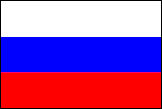
Wlladimir Wladimirowitsch Putin (Владимир Владимирович Путин, 1952 - ) ist Präsident Russlands.
Abb.: Wladimir Wladimirowitsch Putin (Владимир Владимирович Путин) bei seiner Inauguration durch den orthodoxen Patriarchen von Moskau, 2000-05-07
[Bildquelle: Фото пресс-службы Президента России. -- http://archive.kremlin.ru/events/photos/2000/05/128981.shtml. -- Zugriff am 2011-12-19]
Abb.: Wlladimir Wladimirowitsch Putin (Владимир Владимирович Путин)
[Bildquelle: AK Rockefeller. -- http://www.flickr.com/photos/akrockefeller/7208431152/. -- Zugriff am 2013-05-24. -- Creative Commons Lizenz (Namensnennung, share alike)]
2000-05-11
Feiern zum 100. Geburtstag von Pridi Banomyong (ปรีดี พนมยงค์, 1900 - 1983). Sulak Sivaraksa (สุลักษณ์ ศิวรักษ์, 1933 - ) und viele Oktobristen (คนเดือนตุลา) sponsern die Feiern.
2000-05-14

In Marblehead, Massachusetts (USA), stirbt Alexander MacDonald (geb. 1908), der Gründer der Bangkok Post.
Abb.: Lage von Marblehead, Massachusetts (USA)
[Bildquelle: OpenStreetMap. -- Creative Commons Lizenz (Namensnennung, share alike)]
2000-05-14
Shin Corporation (ชิน คอร์ปอเรชั่น) erwirbt 39% Anteile am Fernsehkanal iTV (สถานีโทรทัศน์ไอทีวี). 2001 wird sie den Anteil auf 64% erhöhen. Wegen der Verbindung von Shin Corp mit Thaksin Shinawatra (ทักษิณ ชินวัตร) entstehen Sorgen über die politische Unabhängigkeit des Senders.
Abb.: ®Logo
[Bildquelle: th.Wikipedia]
Abb.: Anti-Thaksin-Plakat, 2008
[Bildquelle: Adaptor-Plug. -- http://www.flickr.com/photos/11401580@N03/2558347900/. -- Zugriff am 2011-12-26. -- Creative Commons Lizenz (Namensnennung, keine kommerzielle Nutzung)]
"iTV (สถานีโทรทัศน์ไอทีวี) was a television station in Thailand, owned by ITV Public Company Limited (SET: ITV), a unit of Shin Corporation (ชิน คอร์ปอเรชั่น). Thailand's first UHF channel, the station was started in 1995 when the company was granted a 30-year concession by the Office of the Permanent Secretary to the Prime Minister's Office to operate a free-to-air television station in the Ultra High Frequency (UHF) spectrum at 510-790 MHz. After a lengthy dispute over unpaid concession fees to the Prime Minister's Office, iTV was taken in 2007 over by the government's Public Relations Department and its name was changed to Thai Independent Television (TITV). Following a previously unannounced order of Thailand's Public Relations Department delivered the same day, the station closed down operations at midnight on 14 January 2008. In accordance with the Public Broadcasting Service Act, the channel's frequency was assigned to the Thai Public Broadcasting Service (องค์การกระจายเสียงและแพร่ภาพสาธารณะแห่งประเทศไทย), or Thai PBS (สสท). History Early years
The original name of iTV's holding company was Siam Infotainment Company Limited. Its major shareholders were Siam Commercial Bank (ธนาคารไทยพาณิชย์ จำกัด), the Crown Property Bureau (สำนักงานทรัพย์สินส่วนพระมหากษัตริย์, the investment company of King Bhumibol Adulyadej), and the Nation Multimedia Group (บริษัท เนชั่น มัลติมีเดีย กรุ๊ป จำกัด). Siam Infotainment won a 30 year concession to run a commercial television station, after offering only 120 million baht in royalties. A rival company offered royalties of 625 million baht. This irregularity was subject to a government investigation in 1996. The results of the investigation were never made public.
Established as an independent television station (all other TV stations in Thailand are government controlled), the company barred any one shareholder from having more than a 10% stake. Beholden to no major shareholders and with journalists feeling unencumbered, the station quickly distinguished itself for its in-depth public affairs programs and investigative journalism.
The East Asian financial crisis of 1997 led to heavy losses by the station. One factor for the losses was the high cost of concession fees (25.2 billion baht to be paid over 25 years) imposed by the Permanent Secretary of the Prime Minister's Office, which granted the iTV concession. In 2000, it lost 775 million THB (USD $18 million) — and the Democrat government worried that if it collapsed, it could adversely affect shareholders like Siam Commercial Bank and the Crown Property Bureau. In order to attract outside capital, Prime Minister Chuan Leekpai (ชวน หลีกภัย) lifted the 10% limit on ownership in the station. Shin Corporation, owned by future Thai Prime Minister Thaksin Shinawatra (ทักษิณ ชินวัตร), was requested to purchase a large portion of the company's shares, which he did for USD $60 million. At the time, this was considered a high price for the ailing company.
Under the Shin CorporationUnder new ownership, iTV's news programming became less hard hitting. Journalists said they were pressured to downplay negative news about Shin Corporation's then-owner, Prime Minister Thaksin Shinawatra, and his Thai Rak Thai party (พรรคไทยรักไทย). Twenty-one journalists were fired for speaking out. They later won a court case against iTV and were awarded several years of back pay.
Originally, iTV's news-to-entertainment ratio was about 70:30. In the station's latter years, iTV increased its entertainment-based programming so that about 50% of its shows were entertainment. Among its popular programs was the Thailand version of the Big Brother reality TV show.
In 2004, iTV was granted permission by an arbitration panel that it could increase the amount of entertainment programming and pay the government 230 million baht in annual licensing fees, an amount that was drastically reduced from the 1 billion baht the station had agreed to pay.
In June 2006, as a result of iTV's changes in programming, Thailand's Central Administrative Court invalidated the arbitration panel's ruling, saying the news-to-entertainment ratio must be returned to 70:30 and that broadcaster must pay 76 billion baht in fines. iTV contested the court's decision.[6]
Media-reform activists in Thailand, such as Supinya Klangnarong (สุภิญญา กลางณรงค์) and Jon Ungpakorn (จอน อึ๊งภากรณ์, 1947 - ) had suggested that the station model itself as a public broadcaster, similar to the BBC, PBS, NHK or the Australian Broadcasting Corporation, which the activists say would allow it to better achieve its original mission as an independent public network free of political intervention and business interests.
"The goal of founding iTV back in 1995 was to provide a public service via a truly independent network. That ideal should continue to be supported as we shouldn't forget that this network was set up following the 'dark age' of information which led to the Bloody May events of 1992," Jon Ungpakorn told The Nation.
Thai Independent Television (TITV)In 2006, Shin Corporation, iTV's majority shareholder, was acquired by Temasek Holdings, the investment company of the Singaporean government. Thai media activists strongly criticized the sale. After the 2006 military coup that ousted Thaksin Shinawatra, Thailand's interim civilian government voiced intentions to take over iTV if it failed to pay 2.8 billion dollars in fines. In February 2007, Prime Minister Surayud Chulanont (สุรยุทธ์ จุลานนท์) appointed a new executive board consisting exclusively of civil servants. The station was renamed "Thai Independent Television" (TITV, สถานีโทรทัศน์ทีไอทีวี).
Prime Minister Surayud Chulanont announced that it intended to take over the station and let it be operated by the Public Relations Department (กรมประชาสัมพันธ์), which already ran TVT Channel 11. Surayud promised that the station would not be taken off the air no matter what happened regarding its concession controversy.
PM's Office Minister Dhipawadee Meksawan announced that the station would be taken off the air on midnight on 6 March 2007, following the Cabinet's revocation of iTV's concession in early March 2007. Surayud apologized for not keeping his word.
Then on 7 March 2007, Surayud reversed his decision yet again and ordered that iTV continue broadcasting after the deadline had passed.
Other junta controlled television stations like MCOT were expected to reap windfall gains due to the situation at iTV.[15]
Transformation into Thai PBSOn 14 January 2008, Thailand's Government Public Relations Department delivered a non-negotiable letter ordering closure of the station at midnight that day. The station complied, and immediately after midnight, TITV became history and, in accordance with the Public Broadcasting Service Act, the station was transformed into the Thai Public Broadcasting Service or Thai PBS(สสท)."
[Quelle: http://en.wikipedia.org/wiki/TITV. -- Zugriff am 2011-12-25]
2000-05-15
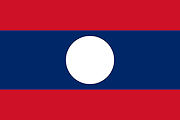
Die laotische Polizei konfisziert 398.000 Pillen Ya Ba [ยาบ้า] auf einem Lastwagen in Muang Sing (ເມືອງສີງ)
Abb.: Lage von Muang Sing (ເມືອງສີງ)
[Bildquelle: OpenStreetMap. -- Creative Commons Lizenz (Namensnennung, share alike)]
2000-05-21
Polizei muss den Pak Mun Staudamm (เขื่อนปากมูล), Provinz Ubon Ratchathani (อุบลราชธานี), sichern, damit Demonstranten nicht die Schleusen öffnen, damit die Fische flussaufwärts ziehen können. Eine Fischleiter, die gebaut worden war, reicht nicht aus, da einige der über 200 Fischarten sie nicht benutzen können.
Abb.: Lage des Pak Mun Staudamms (เขื่อนปากมูล)
[Bildquelle: OpenStreetMap. -- Creative Commons Lizenz (Namensnennung, share alike)]
Abb.: Pak Mun Staudamm (เขื่อนปากมูล)
[Bildquelle: OpenStreetMap. -- Creative Commons Lizenz (Namensnennung, share alike)]
2000-05-22 - 2000-05-26
2000 Asian Men’s Club Volleyball Championship in Suphanburi (สุพรรณบุรี). In der Gesamtwertung gewinnt PTT (Thailand) den 4. Platz.
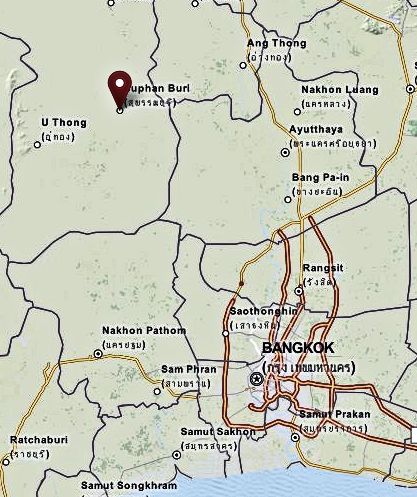
Abb.: Lage
von Suphanburi (สุพรรณบุรี)
[Bildquelle: OpenStreetMap. --
Creative
Commons Lizenz (Namensnennung, share alike)]
2000-05-29
Ministerpräsident gibt den Bericht des Verteidigungsministeriums zum "Black May" (พฤษภาทมิฬ) 1992 frei. Von den 605 Seiten des Berichts sind 60% geschwärzt. Das nennt man Aufklärung auf Thai-Art (แบบไทย).
2000-05-30
Bangkok Mass Transit Authority (องค์การขนส่งมวลชนกรุงเทพ) führt Busse nur für Frauen ein. Der Fahrpreis ist wie in normalen Bussen.
Abb.: "Ladys only"-Bus, Bangkok, 2009
[Bildquelle: Sheep"R"Us. -- http://www.flickr.com/photos/sheeprus/3675248718/. -- Zugriff am 2011-12-26. -- Creative Commons Lizenz (Namensnennung, keine kommerzielle Nutzung, keine Bearbeitung)]
2000-05-31

Malaysia lädt die Nachkommen von Mahsuri ein, aus Phuket (ภูเก็ต) nach Malaysia zurückzukehren. Unterkunft, Ausbildung und Jobs werden ihnen garantiert.
Abb.: Einbandtitel
Abb.: Lage von Phuket (ภูเก็ต) und Langkawi
[Bildquelle: OpenStreetMap. -- Creative Commons Lizenz (Namensnennung, share alike)]
"Mahsuri was a young woman who lived in Langkawi, Malaysia either during the 14th or 19th century. According to folklore, she was accused of adultery and executed by stabbing. Her tomb, Makam Mahsuri, has become a tourist attraction on the island. Legend
Mahsuri was the daughter of a Malay couple who moved from their native Phuket to the island of Langkawi in search of a better life. She was the most beautiful in all of Langkawi and married the warrior Wan Darus. As was required of him, her husband had to go to war, leaving Mahsuri behind to fend for herself. It was during this time that Mahsuri befriended a young man named Deraman. The village chief's wife was jealous of Mahsuri's beauty. She spread a rumour that Mahsuri was unfaithful and was having an affair with Deraman in the absence of Wan Darus. Eventually the rumours grew strong enough that the villagers openly accused her of adultery. Mahsuri pleaded her innocence, but no one believed her.
Mahsuri was to be tied to a tree (or pole) and stabbed to death but it didn't work. After every execution attempt failed, Mahsuri told them to kill her with her family's kris. When she was stabbed, white blood flowed from the wound, signifying her innocence. Some birds flew above her to cover her body. With her dying breath, Mahsuri cursed Langkawi to have seven generations of bad luck. The kingdom was soon taken over by Siam. The villagers at Padang Mat Sirat burned their own paddy fields rather than let them fall into the hands of the Siamese.
ImpactMany locals of Langkawi believe the legend to be true, citing the decades of failed crops that followed Mahsuri's death. Langkawi was also attacked by Siam numerous times, the last invasion taking place in 1821. The field which was torched by the farmers is still known as Beras Terbakar or "burnt rice". It is only at the end of the 20th century, after the seven generations have supposedly come to pass, that Langkawi began to prosper as a tourist destination. The descendants of Mahsuri continue to live in Phuket, Thailand, and have on occasion returned to Langkawi to visit her tomb.[1] Among them was Sirintra Yayee (ศิรินทรา ยายี), also known as Wan Aishah Wan Nawawi, who came into the spotlight during her visit to Kedah in 2000."
[Quelle: http://en.wikipedia.org/wiki/Mahsuri. -- Zugriff am 2014-04-10]
2000-06
In über 30 Jahren Forschungsarbeit ist es Dr. Yongyuth Yuthavong (ยงยุทธ ยุทธวงศ์, 1944 - ) gelungen, die Struktur des Enzyms - Dihydrofolatreduktase (DHFR) - der Malaria-Erreger (Plasmodium sp.) zu analysieren, die diesen ermöglicht, gegen Malariamittel resistent zu werden.
Abb.: Dr. Yongyuth Yuthavong (ยงยุทธ ยุทธวงศ์)
[Bildquelle: th.Wikipedia. -- Fair use]
Abb.: Struktur von Dihydrofolatreduktase (DHFR)
[Bildquelle: Fvasconcellos / Wikipedia. -- Public domain]
2000-06
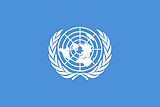
Gründung von UNIAP (United Nations Inter-Agency Project on Human Trafficking)
Abb.: Wege des Menschenhandels in Thailand
[Bildquelle: http://www.no-trafficking.org/images/thailand_large.jpg. -- Zugriff am 2016-04-20. -- Fair use]
"The United Nations Inter-Agency Project on Human Trafficking (UNIAP) was established in 2000 to facilitate a stronger and more coordinated response to human trafficking in the Greater Mekong Sub-region (GMS). UNIAP is managed by a regional management office in Bangkok, with country project offices in the capitals of Cambodia, China, Lao PDR, Myanmar, Thailand and Viet Nam." [Quelle: http://www.no-trafficking.org/how.html. -- Zugriff am 2016-04-20]
"Thailand is a source, transit and destination country for human trafficking. It is a destination-side hub of exploitation in the Greater Mekong Sub-region, for both sex and labour exploitation. Both internal and cross-border trafficking occur in and from Thailand, for sex and labour exploitation. Male and female migrants from neighbouring countries are trafficked into Thailand; Thais are trafficked to wealthier countries in Northeast Asia, the Middle East, and Europe; and there is rural-urban risky migration and trafficking as well."
[Quelle: http://www.no-trafficking.org/thailand.html. -- Zugriff am 2016-04-20]
2000-06-13

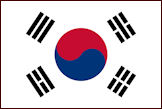
Pjöngjang (Nordkorea): Gipfeltreffen des nordkoreanischen Diktators Kim Jong Il (김정일, 1941 - 2011) und des südkoreanischen Präsidenten Kim Dae Jung (김대중, 1925 - 2009).
2000-06-20
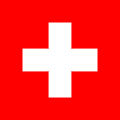
NZZ: Thailand wieder auf stabilem Wachstumskurs : Noch nicht bewältigte Asien-Krise.
"Der Montag ist in Thailand ein Tag der offiziellen wirtschaftlichen Erfolgsmeldungen gewesen. Zum einen hat das «National Economic and Social Development Board» (NESDB, สำนักงานคณะกรรมการพัฒนาการเศรษฐกิจและสังคมแห่งชาติ), die der Regierung unterstellte Wirtschaftsforschungsstelle, an einer Medienkonferenz bekanntgegeben, dass das Bruttoinlandprodukt (BIP) in den ersten drei Monaten des laufenden Jahres im Vergleich mit der entsprechenden Vorjahresperiode um 5,2% zugenommen habe. Die Volkswirtschaft, in der Anfang Juli 1997 die Asien-Krise zu wirken begonnen hatte und die daraufhin 1998 um 10,8% geschrumpft war, befindet sich somit bereits seit fünf Quartalen in Folge wieder auf Wachstumskurs. Folgerichtig ist zum anderen am Montag rein formal auch die 34 Monate währende Unterstellung Thailands unter das Restrukturierungs- und Hilfeprogramm zu Ende gegangen, das der IMF (Internationaler Währungsfond) im August 1997 zur Bedingung für das Bereitstellen eines von ihm «orchestrierten» Stützkredit-Paketes von insgesamt 17,2 Mrd. $ (davon IMF: 3,9 Mrd. $) gemacht hatte. Angesichts der rascher als erwartet fortschreitenden Erholung von der Krise hatte Thailand nach Bezügen von insgesamt 14,08 Mrd. $ aus dem Hilfspaket zwar schon von September 1999 an auf weitere Finanzhilfe verzichten können. Die Regierung in Bangkok hatte damals jedoch zugesichert, sich dennoch weiterhin freiwillig an das vom IMF vorgegebene Restrukturierungs- und Kontrollprogramm halten zu wollen. Im Februar hatte der scheidende IMF-Direktor an einer Unctad-Konferenz in Bangkok bereits rühmend erwähnt, Thailand habe die «Studien an der IMF-Universität summa cum laude» abgeschlossen. In den vergangenen Wochen sind mehrere IMF-Delegationen zu ähnlichen Schlüssen gekommen und haben Thailand für die nächsten Jahre stetig steigende Wachstumsraten vorausgesagt." [Quelle: NZZ Internationale Ausgabe. -- 2000-06-20. -- S. 10. -- Fair use]
2000-06-26

Die Bangkok Post berichtet über Wege des Waffen- und Drogenschmuggels über Laos
Abb.: Lage von Ban Ahi [บ้านอาฮี]
[Bildquelle: OpenStreetMap. -- Creative Commons Lizenz (Namensnennung, share alike)]
"The Thai press described as follows one of the new drug traffic circuits that supplies yaa baa [ยาบ้า] to the country through its northern frontiers. In June 2000, Thai traffickers were reported to be using the village of Ahi [บ้านอาฮี], 50 km to the northwest of Loei in Tha Li district, as a centre for transit and for stocking methamphetamine and arms destined for Thailand. Ban Khon Ta Pu, also in Laos and previously known for its cannabis plantations, was then an important village in the passage of methamphetamine to Ban Ahi. Drugs and arms traffickers crossed the border by passing over the Huang River before delivering their stocks to warehouses in Ban Ahi. The latter’s prosperity, as measured by such things as well-built houses and pick-up trucks, reflects the profitability of these ventures. A full 80 per cent of the population of Ban Ahi was then thought by Thai authorities to be involved in the trade or use of drugs. As of July 2000, the resulting violence of the illegal drug trade had already left 67 children in the village orphaned." [Quelle: Chouvy, Pierre-Arnaud <1971 - > ; Meissonier, Joël <1973 - >: Yaa baa : production, traffic, and consumption of methamphetamine in mainland Southeast Asia. -- Singapore : Singapore Univ. Pr,, 2004. -- 210 S. : Ill. ; 23 cm. -- ISBN 978-9971-69-278-0. -- Originaltitel: Yaa Baa : production, trafic et consommation de méthamphétamine en Asie du Sud-Est continentale (2001). -- S. 39 - 41. -- Fair use]
ausführlich: http://www.payer.de/thailandchronik/ressourcen.htm
Zu Chronik 2000 / B. E. 2543. -- 3. Juli bis Dezember